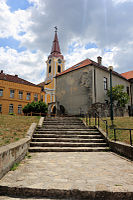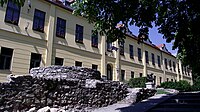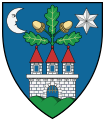
Sopron is a city in Hungary on the Austrian border, near Lake Neusiedl/Lake Fertő.

Miskolc is a city in northeastern Hungary, known for its heavy industry. With a population of 161,265 as of 1 January 2014, Miskolc is the fourth largest city in Hungary. It is also the county capital of Borsod-Abaúj-Zemplén and the regional centre of Northern Hungary.
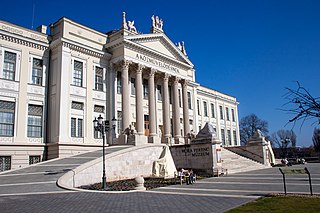
Szeged is the third largest city of Hungary, the largest city and regional centre of the Southern Great Plain and the county seat of Csongrád-Csanád county. The University of Szeged is one of the most distinguished universities in Hungary.

Balatonfüred is a resort town in Veszprém county, in Hungary. The town with a population of 13,000 is situated on the northern shore of Lake Balaton. It is considered to be the capital of the Northern lake shore and is a yachting destination. It is also a location for fishing although the introduction of eels and other non-indigenous species has caused ecological damage in recent years.

Odorheiu Secuiesc is the second largest municipality in Harghita County, Transylvania, Romania. In its short form, it is also known as Odorhei in Romanian and Udvarhely in Hungarian. The Hungarian name of the town "Udvarhely" means "courtyard place".

Veszprém is an administrative county (vármegye) in Hungary. Veszprém is also the name of the capital city of Veszprém county.

The Bükk Mountains are a section of the North Hungarian Mountains of the Inner Western Carpathians. Much of the area is included in the Bükk National Park.

Polgárdi is a town in Fejér county, Hungary, reportedly the site where the Sevso Treasure was discovered.
Zsarolyán is a village in Szabolcs-Szatmár-Bereg county, in the Northern Great Plain region of eastern Hungary.

Szigliget is a village in Veszprém county, Hungary.

Balatonföldvár is a popular resort town in Somogy County, Hungary, on the southern side of Lake Balaton, approximately 120 km southwest from Budapest and about 23 km southwest from Siófok, the "capital of Balaton". Balatonföldvár is a frequently visited tourist destination among Hungarians and foreign guests because of its natural beauties, historical heritages or its countless leisure opportunities. The town offer several water sport and mainland sport activities.
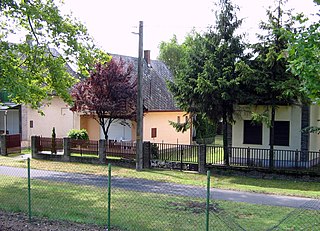
Balatonberény is a village in Somogy county, Hungary, with a popular nudist beach. The country village had a population of 1,200 in 2011.

Balatonszárszó is a village along the southern shore of Lake Balaton in Somogy county, Hungary. The settlement is part of the Balatonboglár wine region, and belongs to the region of Southern Transdanubia. The village is famous for being the home and place of death of the renowned Hungarian poet József Attila.

Balatonszentgyörgy is a village in Somogy county, Hungary. It is near to the village of Balatonberény. The village is next to Lake Balaton.
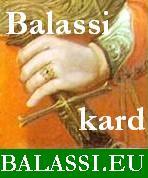
The Balint Balassi Memorial Sword Award is a European award for literature presented in Budapest since 1997. The native form of this name is Balassi Bálint-emlékkard. This award commemorates the 16th century Hungarian poet Bálint Balassi. The memorial sword is presented annually to an outstanding Hungarian poet, and to a foreign poet for excellence in translation of Hungarian literature, including the works of Balassi. The sword itself is a replica of those sabres that the 16th century Hungarian cavalry wore during the sieges of fortresses. They are the work of a contemporary swordsmith. This award is presented each year on Bálint's (Valentine's) Day, February 14, in the city of Buda. The celebration venue is traditionally the Hotel Gellért.

Kékszalag or the Blue Ribbon Round the Lake Balaton Race is an international sports event held in Hungary every year between more than 30 boat classes. The regatta starts and finishes in Balatonfüred, after the 155+km circumnavigation of the Lake Balaton. By today the regatta became Europe's most prestigious and oldest existing round a lake competition. The Blue Ribbon's course is the longest among the main European round the lake events and nowadays has also the largest fleet competing. During the race, the Transportation Rules of Inland Waterways apply. From 2014 the Hungarian Yachting Association has lifted the restrictions regarding multi-hull sailboats and today the race is open to everybody in the spirit of the founders.
Ferenc Hill is located in the Buda Hills in the 2nd district of Budapest.

The Bathory Cave is a cave located just below the top of Nagy-Hárs Hill, on the northeast side of the mountain. It is located within the Danube-Ipoly National Park and the 2nd district of Budapest. The cave gets its name from Pauline monk, László Báthory who used the cave as a hermitage for twenty years.
Address Unknown is a 1935 Hungarian comedy film directed by Béla Gaál and starring Irén Ágay, Imre Ráday and Gyula Kabos. It was shot at the Hunnia Studios in Budapest and on location around Tihany and the resort town of Balatonföldvár on the shore of Lake Balaton. The film's sets were designed by the art director Márton Vincze.






